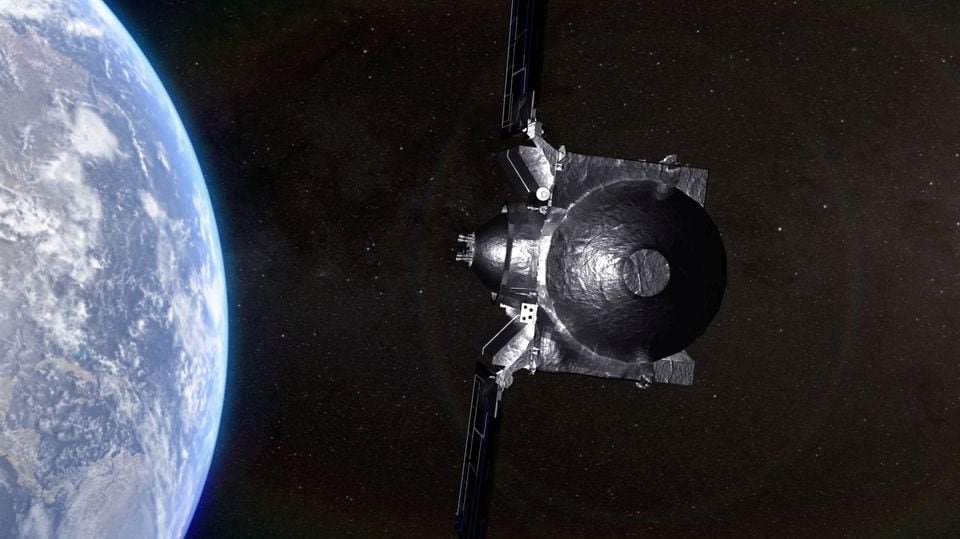The closest any celestial object of that magnitude will have come near Earth in recent history will be an asteroid approximately the width of the Empire State Building, which astronomers say will rip through space within 20,000 miles (32,200 km) of Earth in about 5 1/2 years.
When it does, a NASA spacecraft that was launched in 2016 should be able to offer a thorough analysis of this unusually close approach.
Scientists from the University of Arizona are leading the project, which is anticipated to produce information about planetary formation and insights that could guide efforts to develop a defense mechanism against potential catastrophic asteroid collisions with Earth.
The asteroid Apophis was named after a demon snake, symbolizing evil and chaos in ancient Egyptian mythology. When it was discovered in 2004, scientists predicted that the asteroid would collide with Earth in 2029. Since then, improved observations have eliminated the possibility of an impact for at least another century.
Nevertheless, the asteroid will pass close to Earth during its following approach in 2029—less than a tenth of the moon’s distance from our planet and well within the orbits of several geosynchronous Earth satellites.
OSIRIS-REx is the spacecraft currently en route to meet Apophis. Three years ago, it made headlines when it successfully removed a soil sample from an asteroid and returned it to Earth in a capsule that parachute-landed in Utah in September.
The Second Act of Spacecraft
NASA decided to rename the spacecraft OSIRIS-APEX, which stands for Apophis EXplorer, and ignite its engines to set it on route for its next target instead of retiring it.
An overview of the Apophis mission was released in the Planetary Science Journal.
Apophis is an oblong, roughly peanut-shaped, stony asteroid that is thought to be primarily composed of silicate minerals, iron, and nickel. About 1,110 feet (340 meters) in diameter, it is scheduled to pass within 19,800 miles (31,860 km) of Earth’s surface on April 13, 2029, and be visible to the unaided eye for a few hours, according to Michael Nolan, the University of Arizona’s deputy principal investigator on the project.
Nolan stated, “It’s not going to be this glorious show.” Instead, it will appear across Europe and Africa as a point of reflected sunlight in the night sky.
It is believed that a giant asteroid passing so close to Earth happens around once every 7,500 years. The Apophis flyby is the first known encounter of this kind to be foreseen.
Due to Earth’s gravitational pull, there will probably be noticeable disruptions in the asteroid’s orbital path and rotational spin. Tidal forces could push boulders and dust particles aside to form a comet-like tail, which would then cause landslides on Apophis.
The spacecraft will track the asteroid as it approaches Earth and eventually catches up with Apophis. These photos and data will be integrated with measurements from ground-based telescopes to identify and assess the changes made to Apophis during its passage through Earth.
For eighteen months, OSIRIS-APEX is supposed to stay close to Apophis, circling, circling, and even hovering just above its surface while utilizing rocket thrusters to push aside debris and expose what’s underneath.
GLOBAL SCIENCE AND PROTECTION
Apophis is a remnant of the early solar system, like other asteroids. Since its chemistry and mineralogy haven’t altered much in nearly 4.5 billion years, it may hold secrets about the formation and evolution of rocky planets like Earth.
Experts in planetary defense may learn essential details about asteroids’ composition and other characteristics by closely examining Apophis. Scientists will have a better chance of developing practical plans to deflect asteroids and lower the risk of impacts if they know more about the make-up, density, and orbital behavior of these celestial “rubble piles.”
In a planetary defense exercise last year, NASA purposefully crashed a spacecraft with a minor asteroid, pushing the stony object off course and changing the course of its natural motion for the first time in recorded history.
Apophis is far more significant than that asteroid, yet it is still tiny compared to the one that killed the dinosaurs 66 million years ago when it struck Earth.
An asteroid the size of Apophis hitting Earth at hypersonic speed might destroy a large city or region, Nolan said, with the ocean impact causing tsunamis, even though it wouldn’t be large enough to end life as we know it.
“It wouldn’t be globally catastrophic in the sense of mass extinctions,” yet the effect “would come under the category of bad,” Nolan stated. “If it hits, this thing is approaching at a high speed. And whether it’s made of rocks, gravel, ice, or anything else doesn’t matter at that pace. It’s just a large, heavy object traveling quickly,” Nolan continued.


















